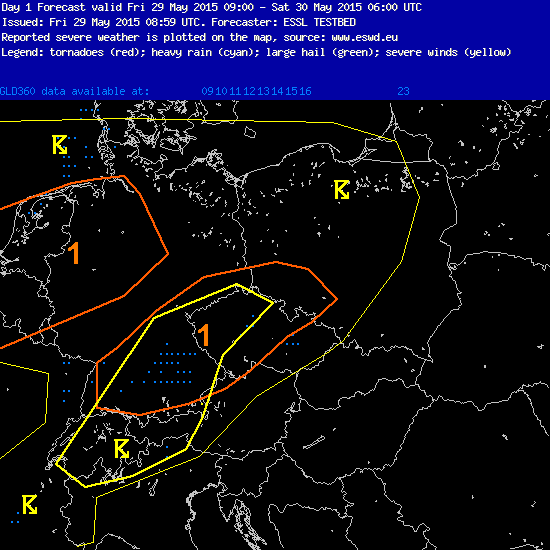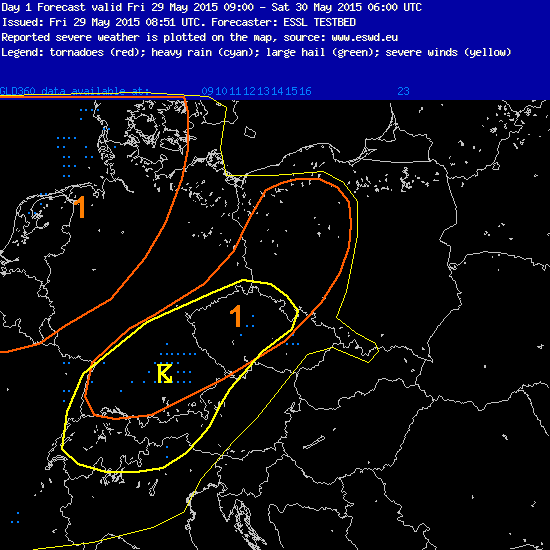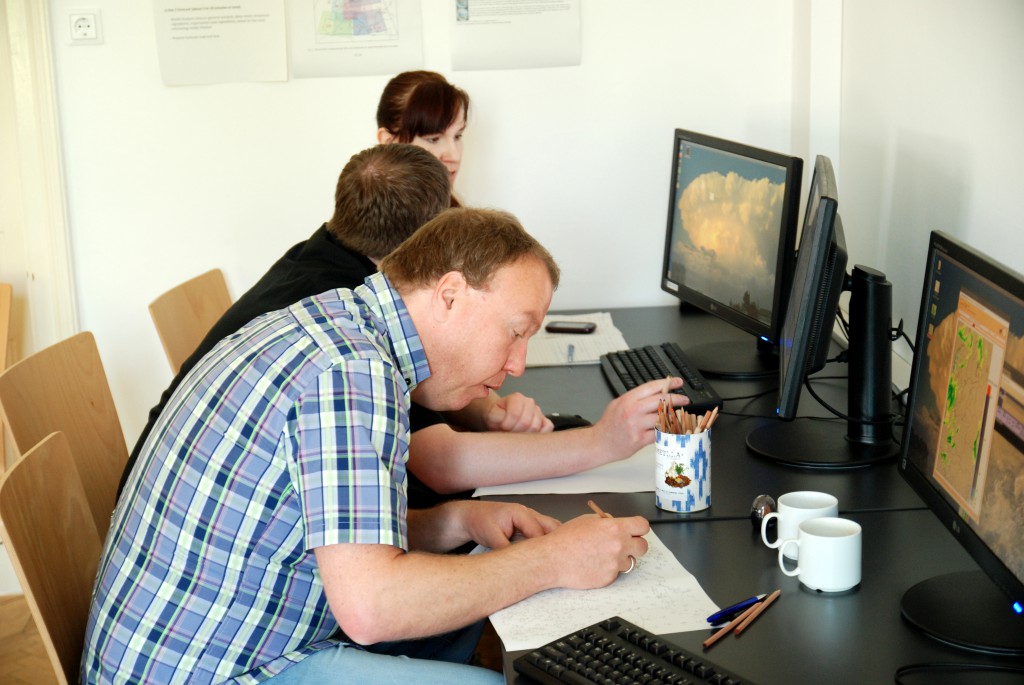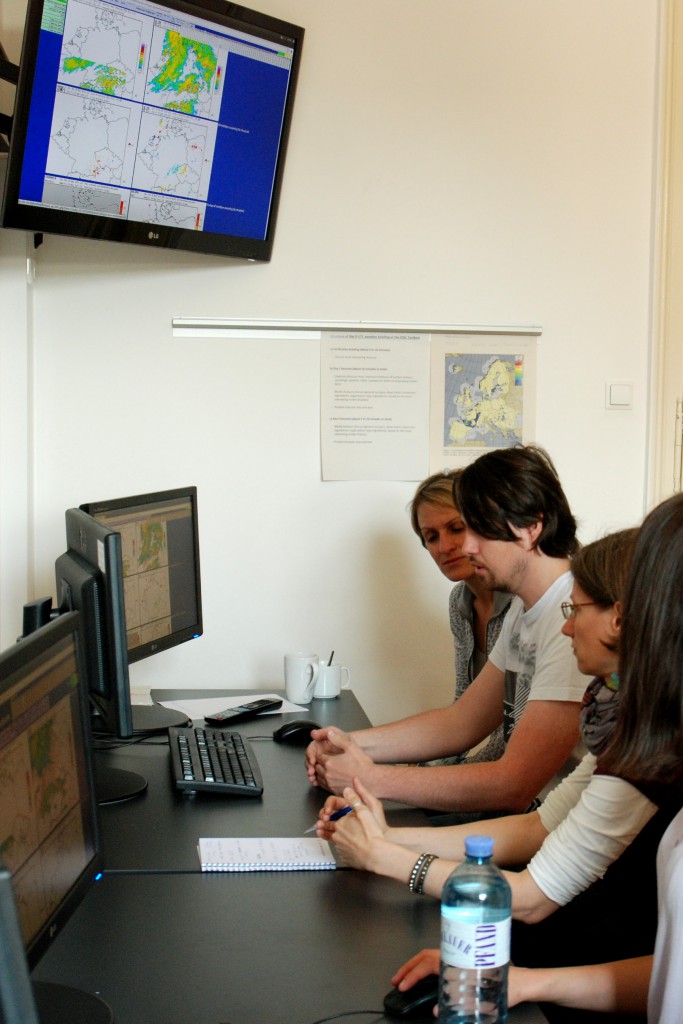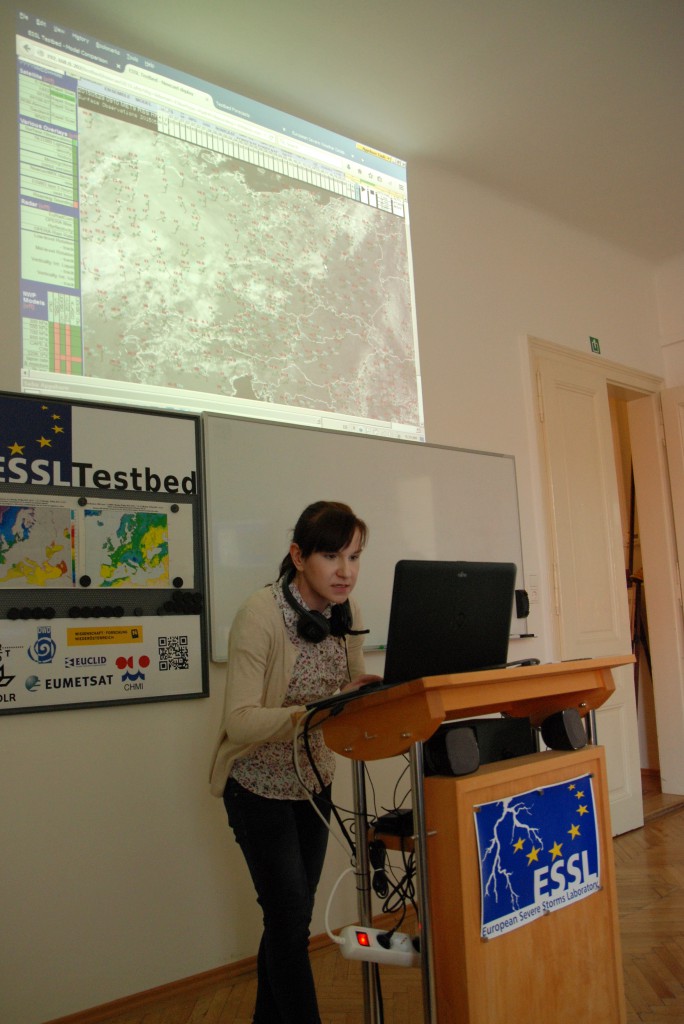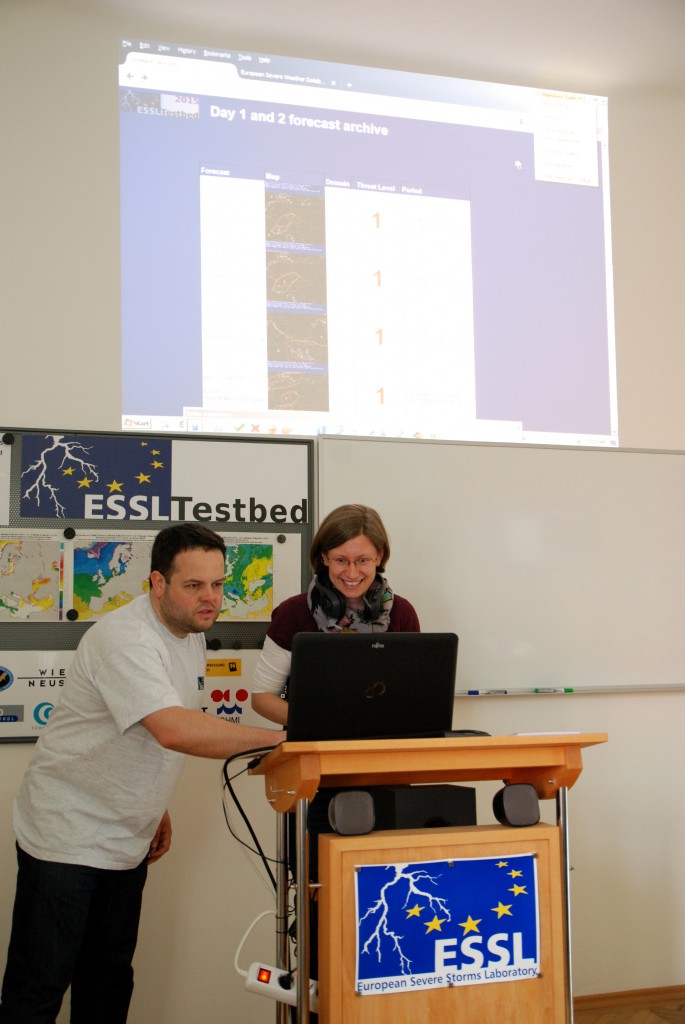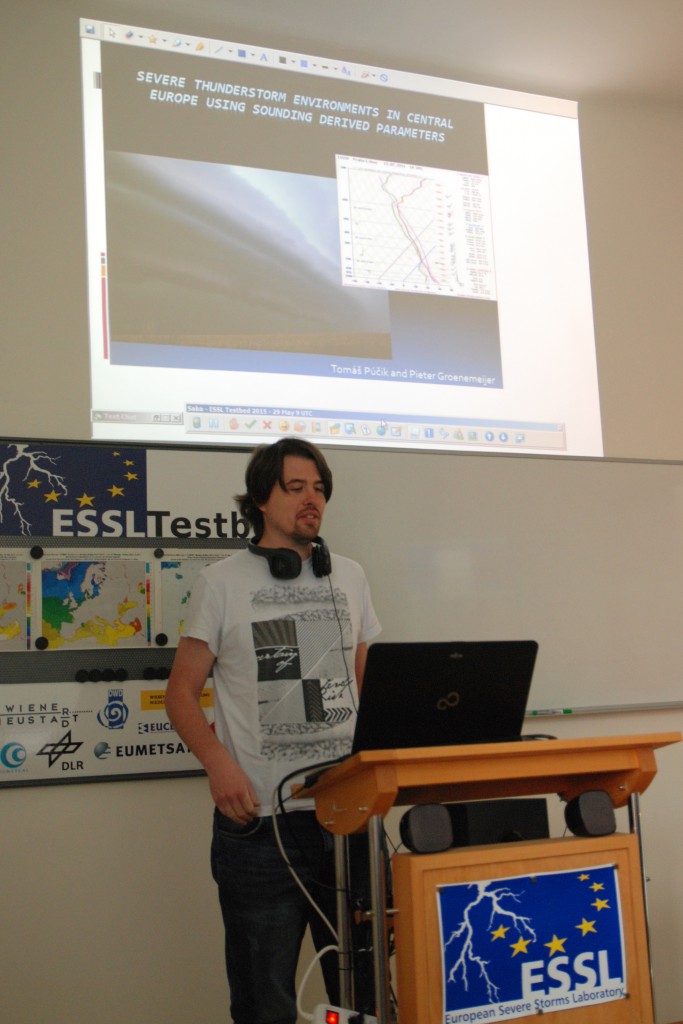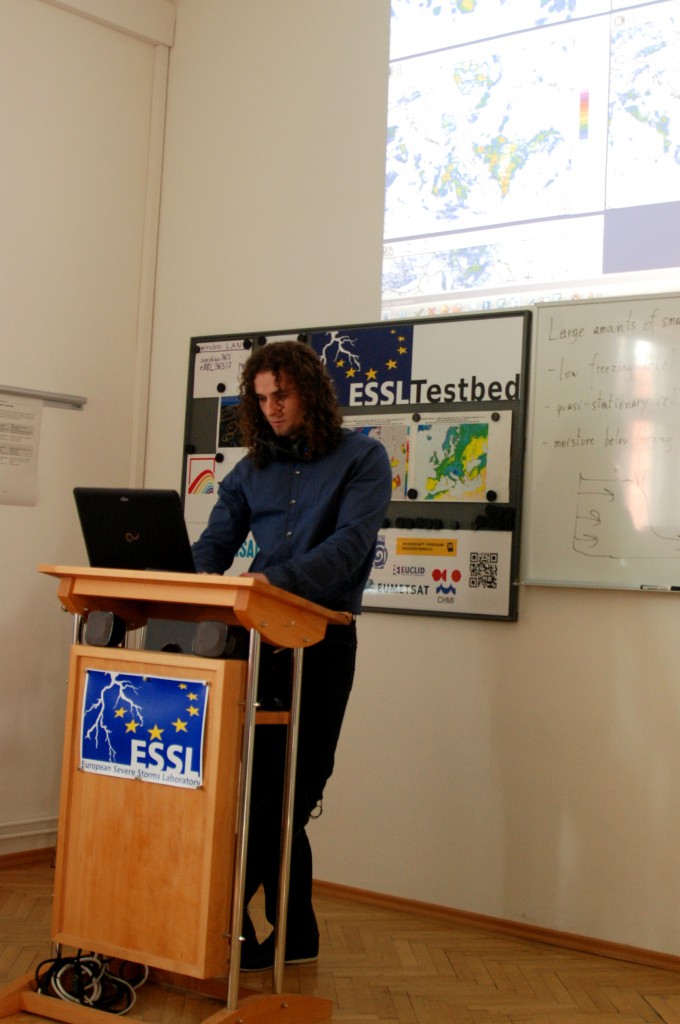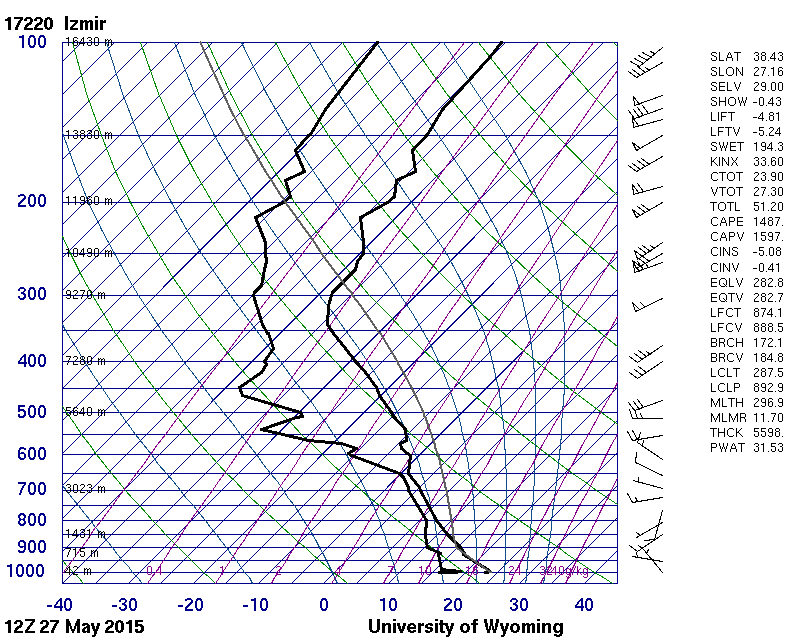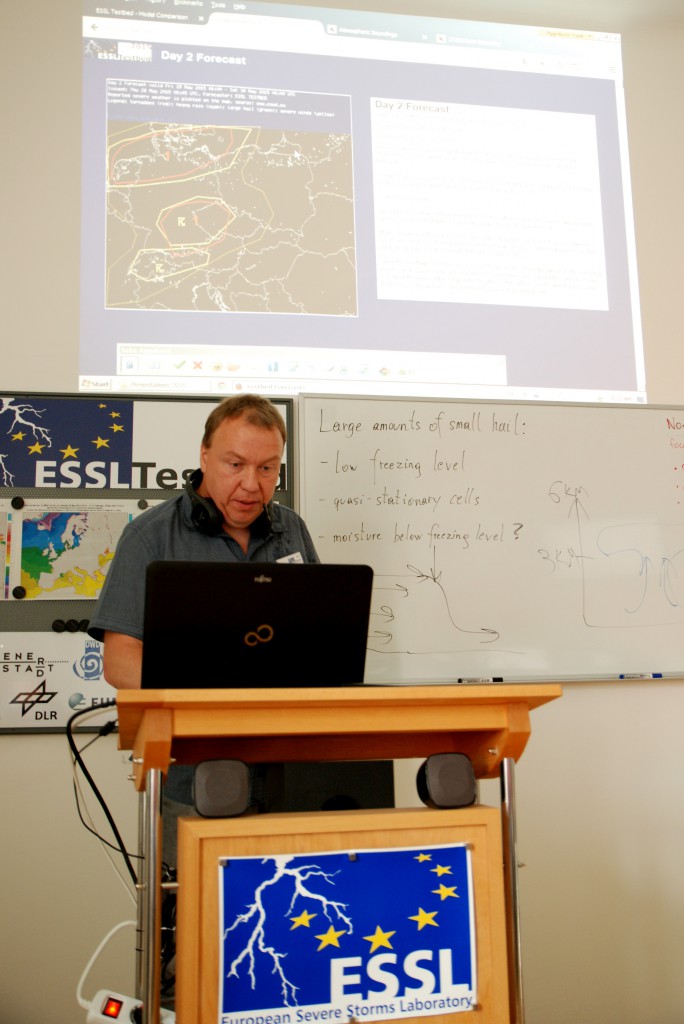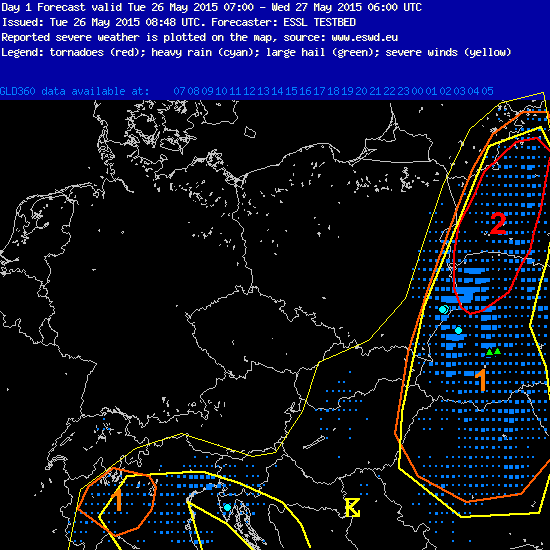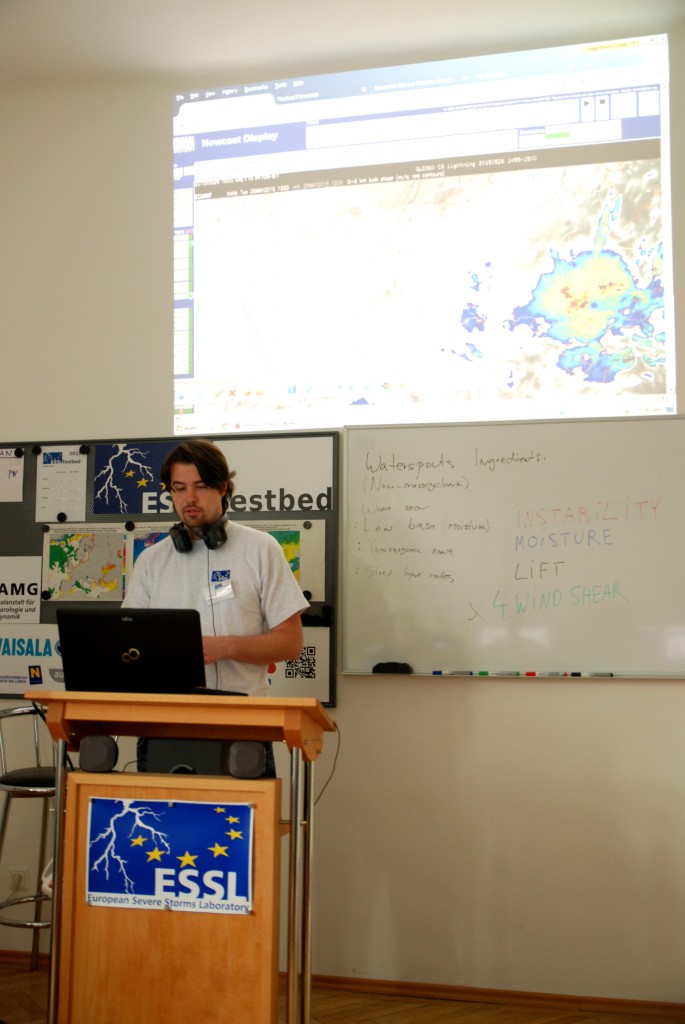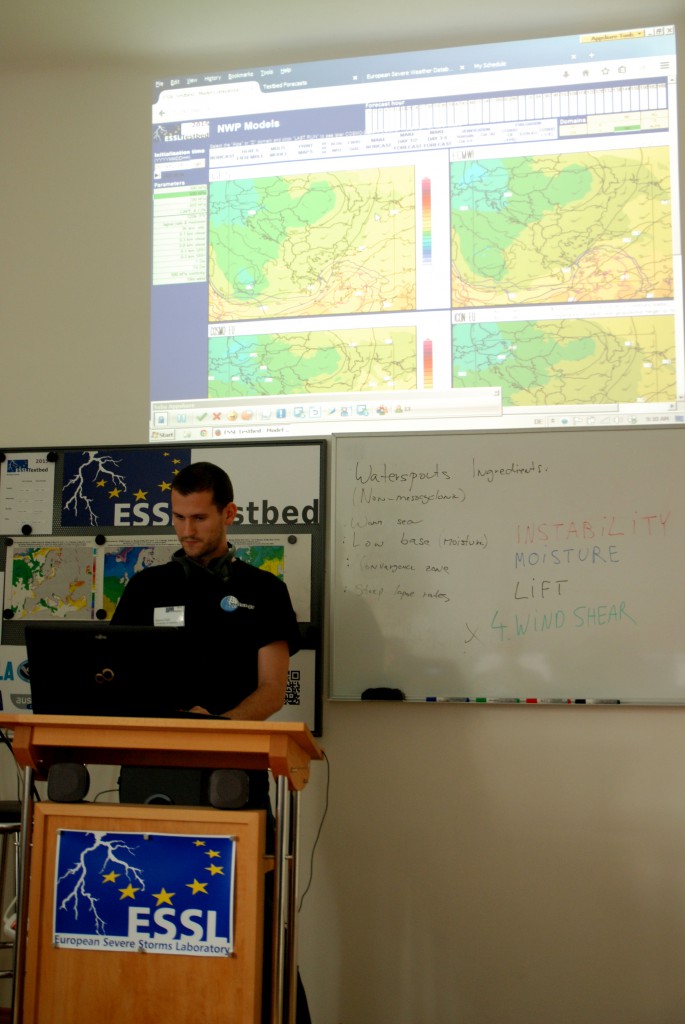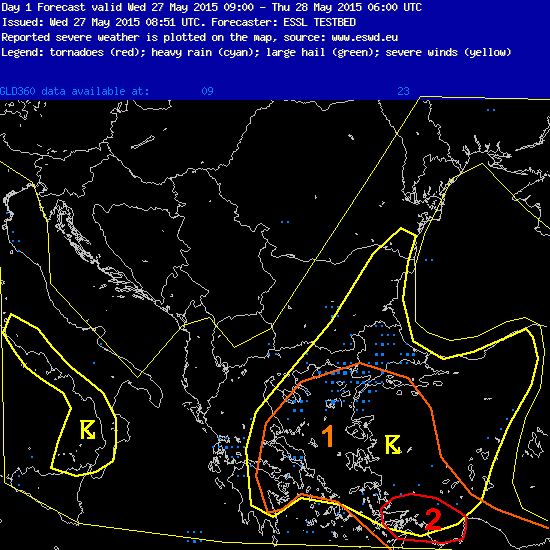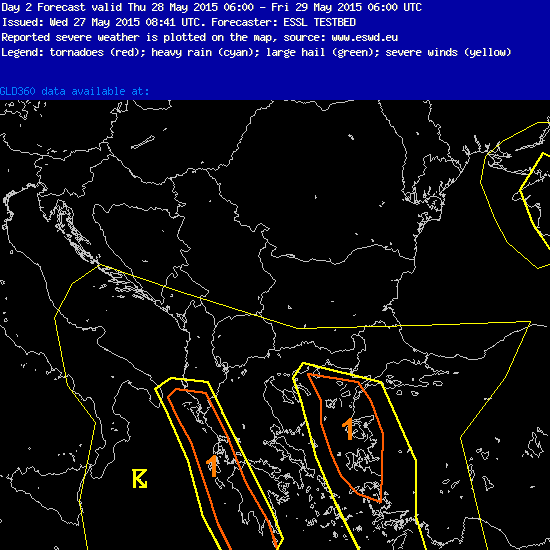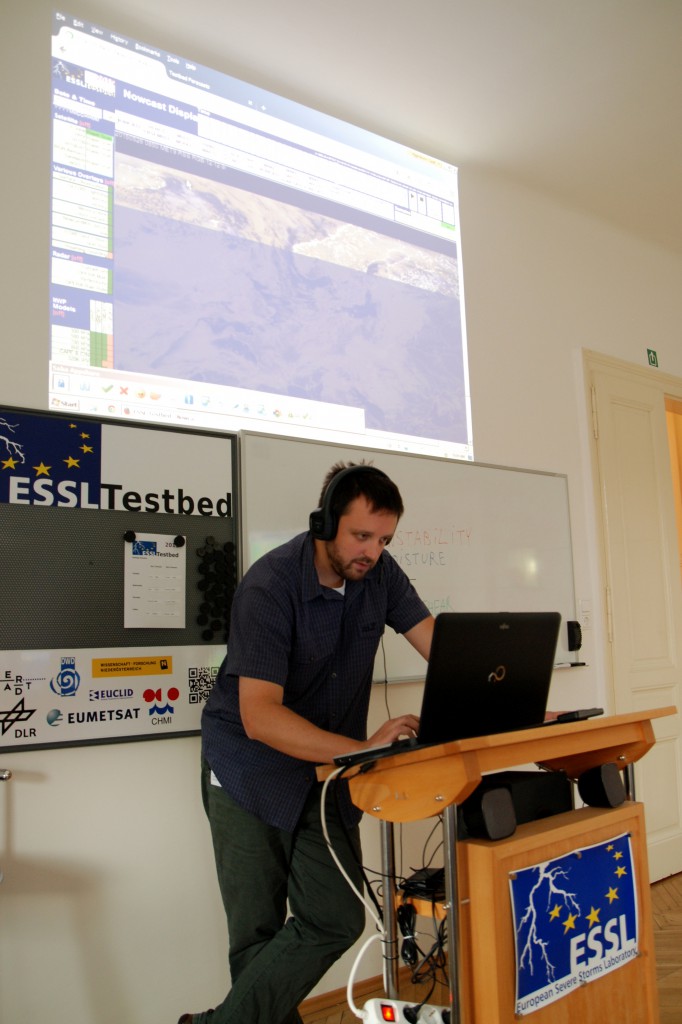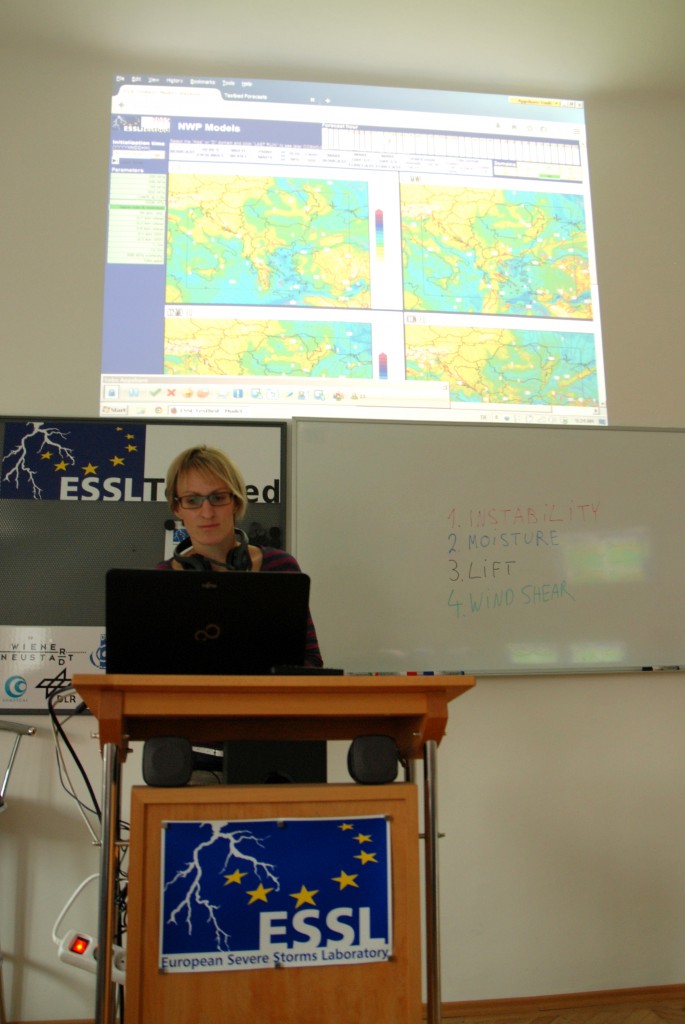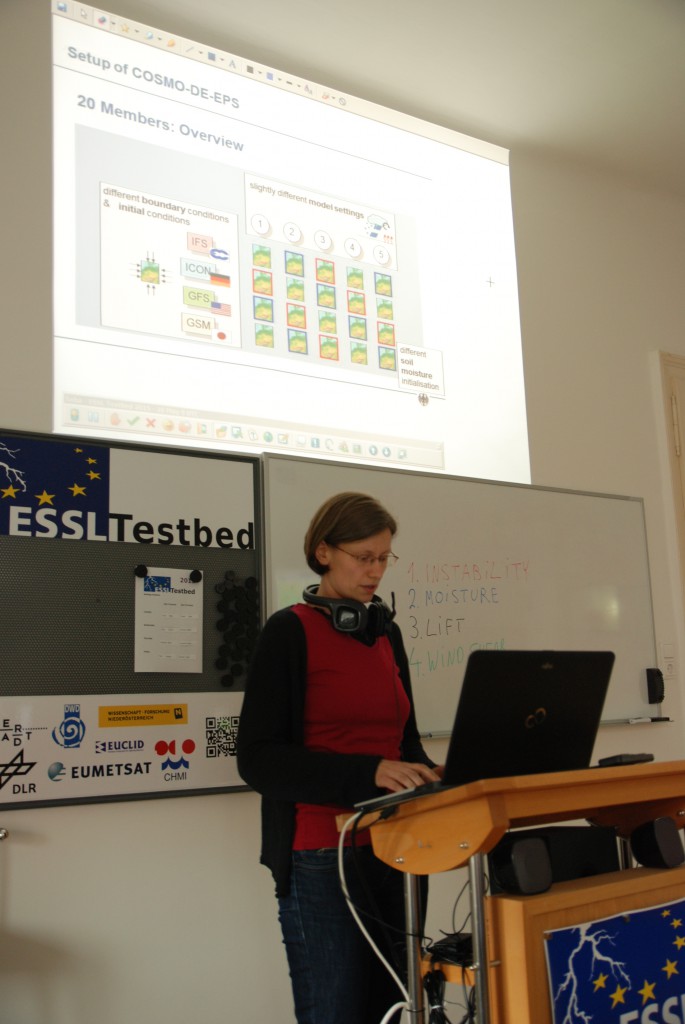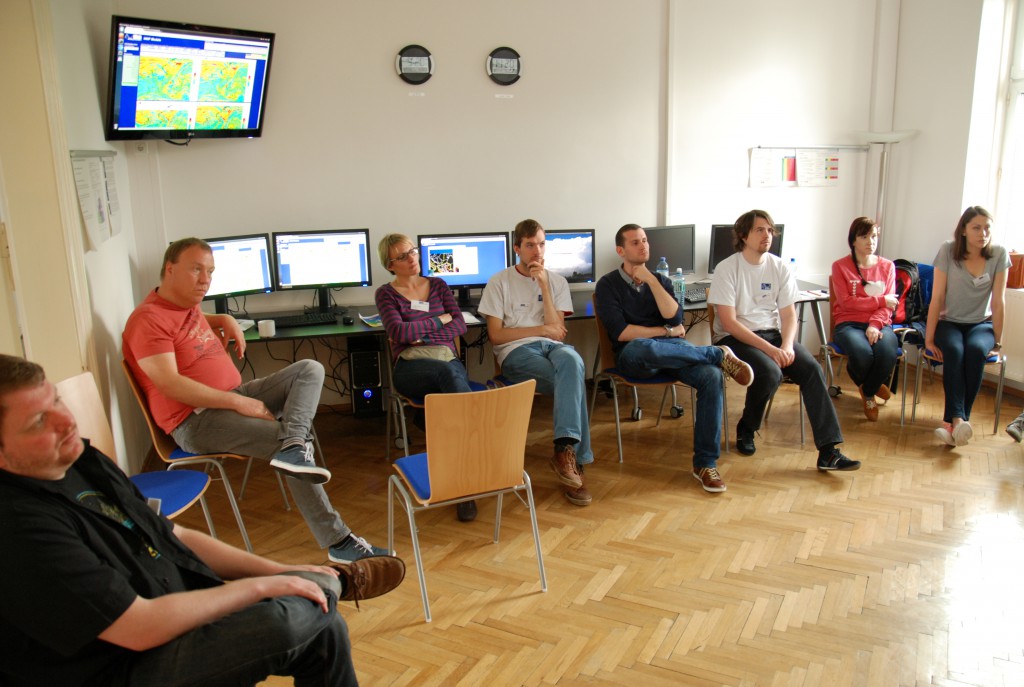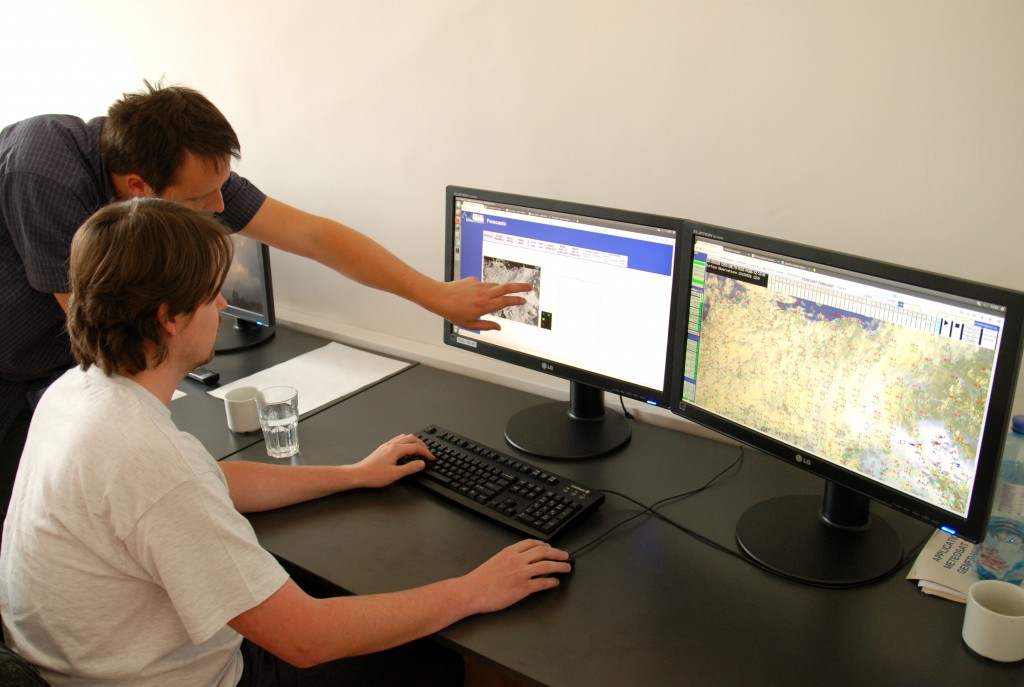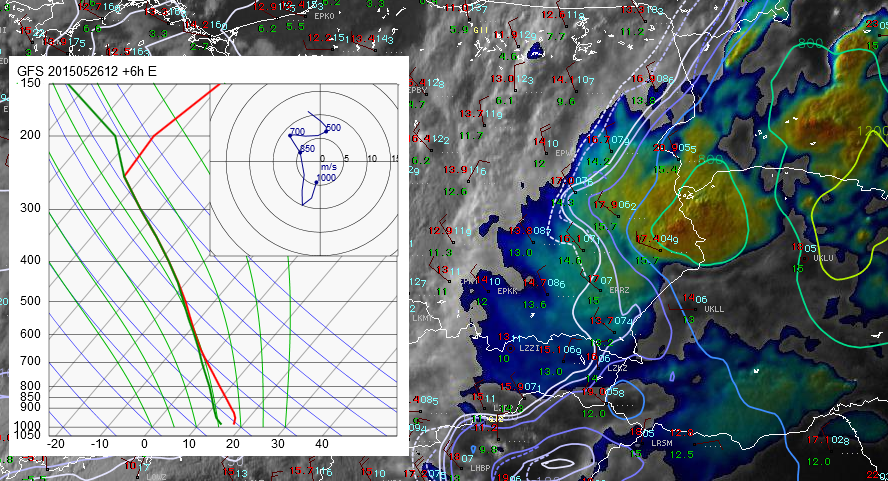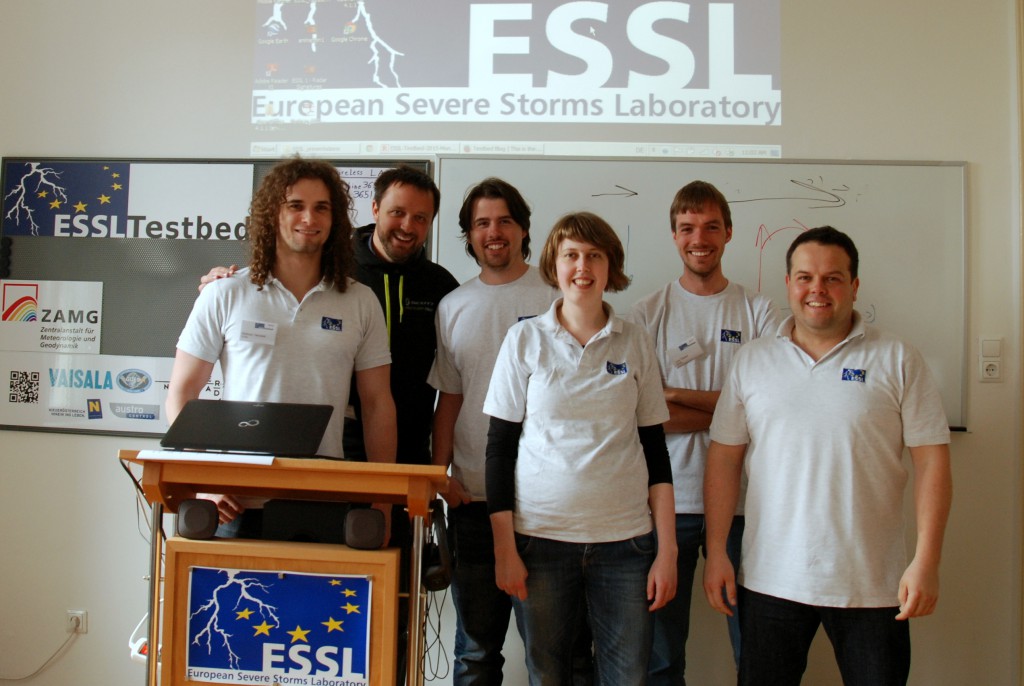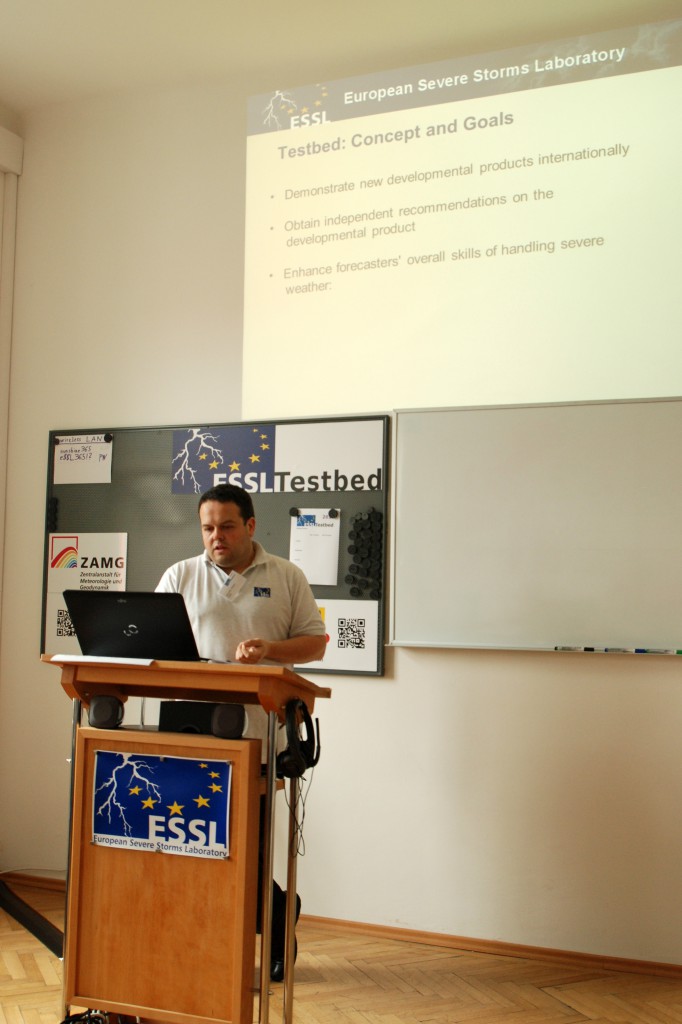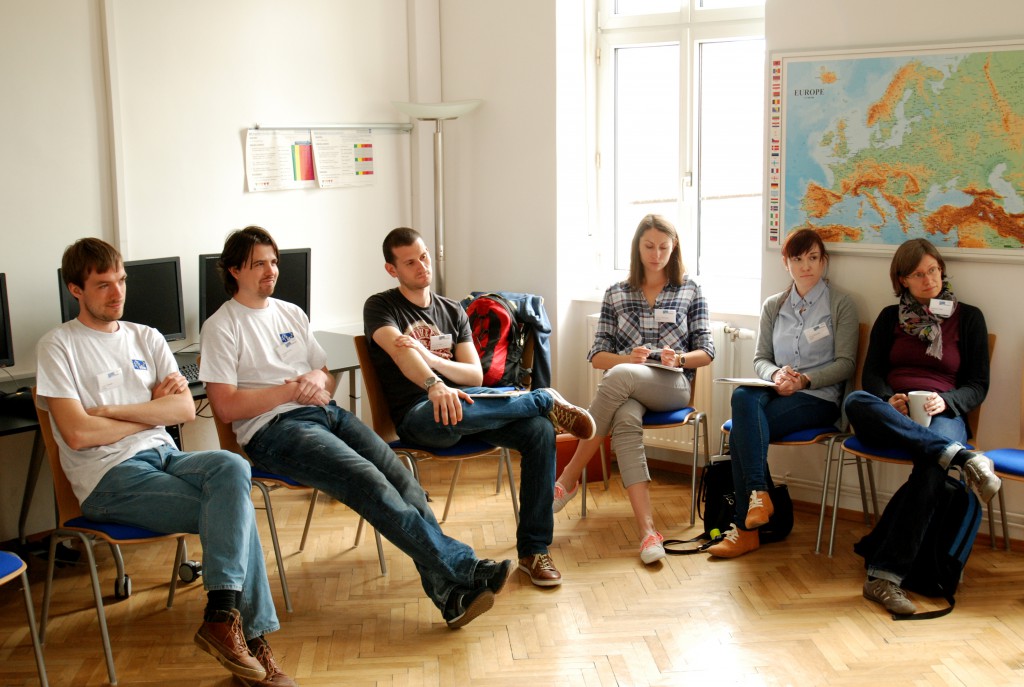Thunderstorms in Europe during the 1st ESSLTestbed week were not very active in producing severe weather phenomena. However, we were able to predict few waterspout, large hail and heavy rain cases, mainly in the SE and E Europe. In the last day our participants focused on evaluating nowcasting and NWP products tested in the testbed. In the morning hours we also divided them into two groups to prepare forecast for this day in the Central European domain. One group was supported by Tomas Pucik while the other by Mateusz Taszarek. Here are these two forecasts:
Our forecasts were consistent in expecting supercell thunderstorms over S Germany and W Czech Republic. We also predict organized line of storms (along the cold front) approaching Benelux and NW Germany in the evening hours. Participants were also very active in preparing and analyzing recent surface observational data. Forecasts were presented on the teleconferencing session by Susanne Theis (DWD) and Anna Wozniak (IMGW).
Very interesting lecture of the day was given by Tomas Pucik, who presented his current research on sounding-derived parameters and their use in forecasting particular severe weather phenomena (tornado, large hail, severe wind gusts, heavy precipitation) associated with thunderstorms.
Looking forward for the severe weather during the next week!

